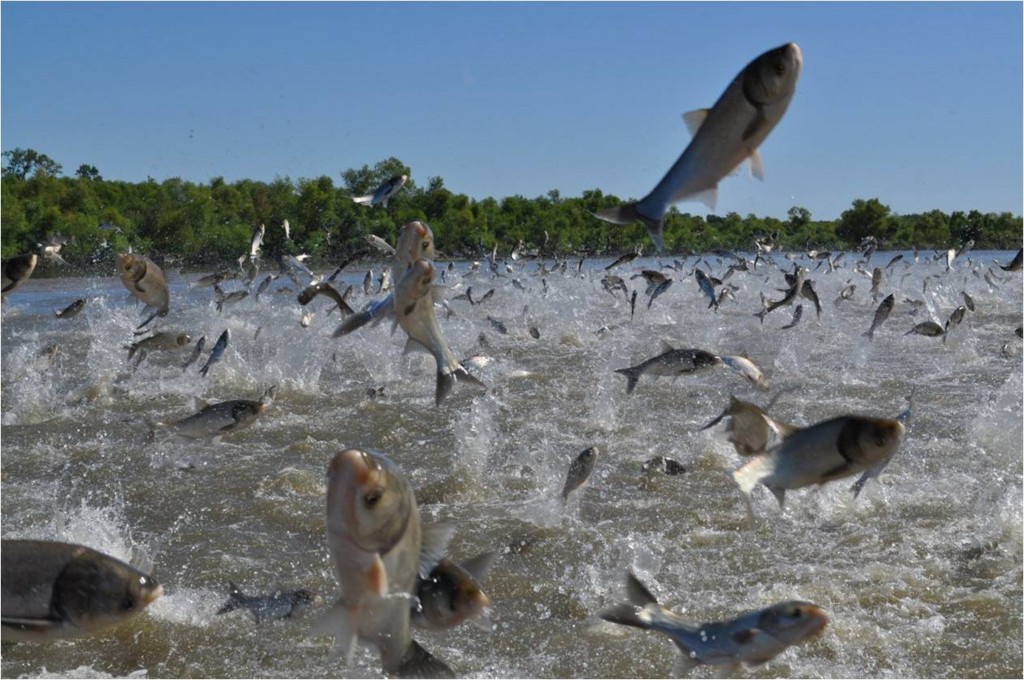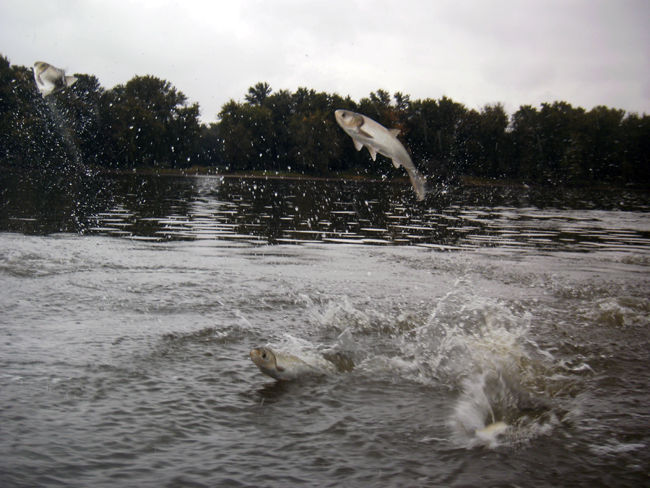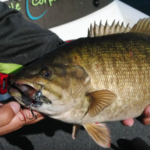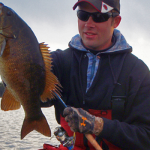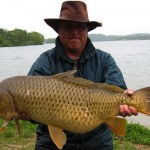By: Kenny Lookingbill – Date Posted: May 11, 2011
Asian carp are the most infamous aquatic invasive species of all time. As a result, there are many fallacies and conspiracy theories about these fish among the general public. Because of my profession as an aquatic ecologist, I have heard endless stories about this group of fish, not limited to, but consisting of the following: The government dropping them into the Illinois River via helicopter; Various DNR’s stocking them in hopes of producing a sport fishery; Eating all the eggs of gamefish species, or even eating gamefish themselves. Then there is the big question of what happens if they make it into Lake Michigan. This crisis then falls on “fish people” like me to try and keep these rumors from proliferating even further.
There are five species of Asian carp which include common carp, grass carp, the lesser known black carp, silver carp, and bighead carp – the last two being the species causing the most problems in the Illinois River.
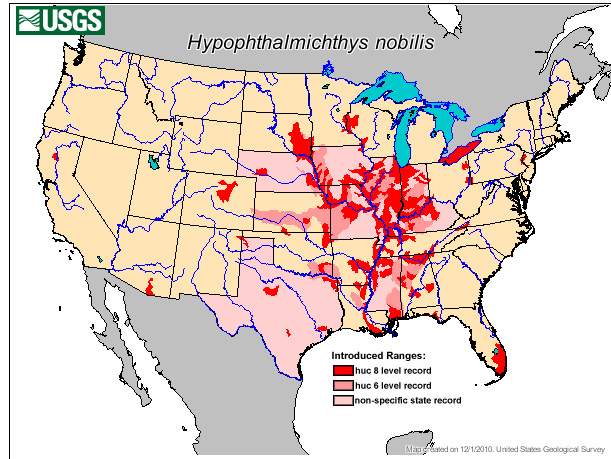
Black carp for instance are a species slowly migrating their way northward, and soon could be causing many problems because they feed on mussels. They would be especially detrimental in Illinois, because many of the Illinois mussel species are threatened or endangered due to habitat degradation. Black carp could hamper our statewide rehabilitation efforts to restore native mussel populations such as the reintroduction of the northern riffleshell in Eastern Illinois.
Silver and bighead carp were originally brought over to the United States as a biological cleansing tool to improve water quality for catfish aquaculture ponds constructed in the floodplains of the lower Mississippi River Valley in states such as Mississippi and Arkansas. However, in the floods of the 1970’s these ponds were inundated and the fish escaped. They have spread northward ever since and were first reported in the Illinois River around 1993 by commercial fishermen. They remained off the general public’s radar until around 2000 when they began spawning successfully and rapidly, and their populations grew exponentially. Soon after, there were reports of fish jumping into boats. These fish were becoming a danger to boaters on the river, and it was only then as the public then began to take notice.
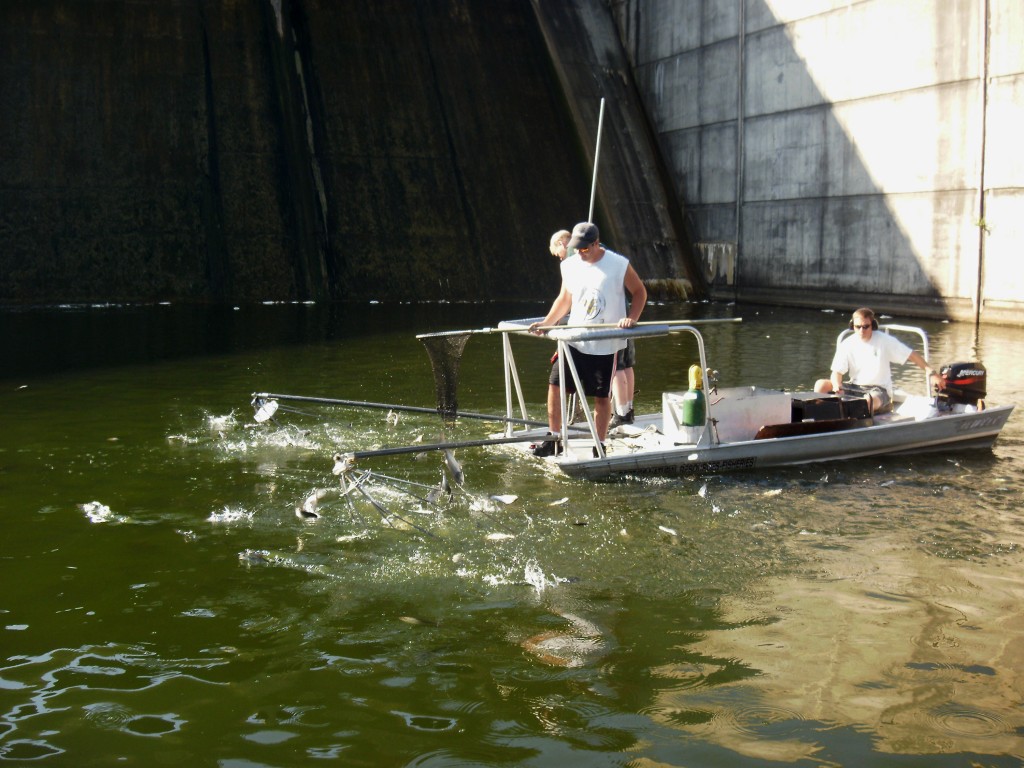
Many people have blamed Asian carp for the decline of our various sport fisheries of the Illinois River. In truth, sportfish had been declining in the river long before the Asian carp had established themselves. The decline in sportfish can be attributed to the loss of viable spawning and overwintering habitat. The Illinois River was historically one of the most productive fisheries on the continent. However, as a result of the various commercial transformations, the river has undergone man-made alterations such as channelization, and the construction of levees and dams. Consequently, the fluvial dynamics of the river have completely changed. Interestingly enough, the sauger fishery in the Peoria to Spring Valley stretch of the Illinois River is still world class. However, some of the effects of the carp are not as visible.
Silver and bighead carp feed voraciously on phytoplankton and zooplankton, which are at the base of all aquatic food chains. All species of fish depend on these resources at some point in their lives. Baitfish such as gizzard shad are planktivores and feed on plankton for their entire lives. Commercial species including paddlefish, which are already heavily pressured and threatened just about everywhere in the United States, have also suffered from unnecessary competition from the invasive carp. Also, young of the year sportfish depend on zooplankton early on in their lives before moving on to larger prey as they grow. This being said, the Illinois River is still very productive in the lower trophic levels. This may be what is sustaining native fish populations, and unfortunately, also creates the perfect storm for fish like Asian carp.
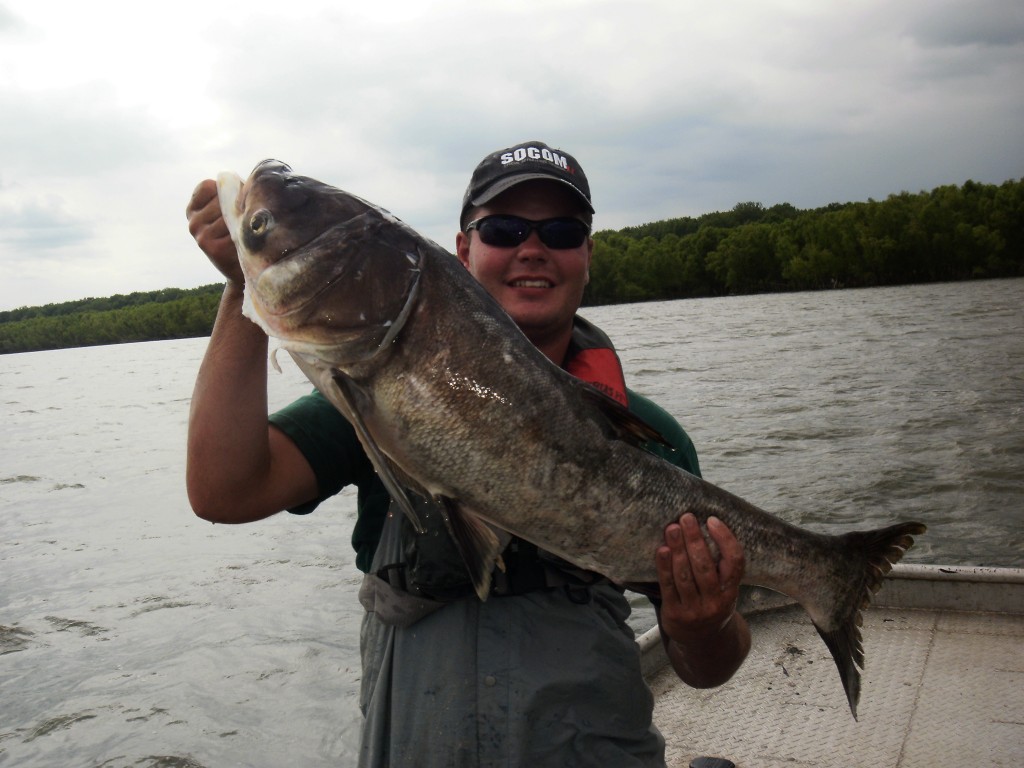
Peak production of zooplankton occurs during the spring season in the floodplains and this is very convenient for young-of-year sportfish. However if the region experiences several drought years in a row, floodplains become limited and many Asian carp overpopulate these types of habitats. This could possibly lead to less food sources for native fish in these nurseries, and result in lower recruitment of young of the year sportfish.
Knowing all of this information, the question to ask now is what happens if they get into the Great Lakes? There is no way of knowing the answer to this and is a very controversial subject.
As of now, there is an electric barrier in the Sanitary Ship Canal, a Chicago waterway. All signs are indicating it is effective as a deterrent. Over the past few years, the Illinois Department of Natural Resources has received millions of dollars in funding, and they hand this money out the form of grants for various projects that universities in Illinois do to further learn more about the fish and possible modes that can be used to prevent further range expansion.
To date, the best solution that has been presented for completely stopping the Asian carp invasion is to fill in the shipping canal. Unfortunately, the shipping companies have rejected this idea because they rely on the waterway for transporting goods. If closure were to happen, these companies would lose millions of dollars.
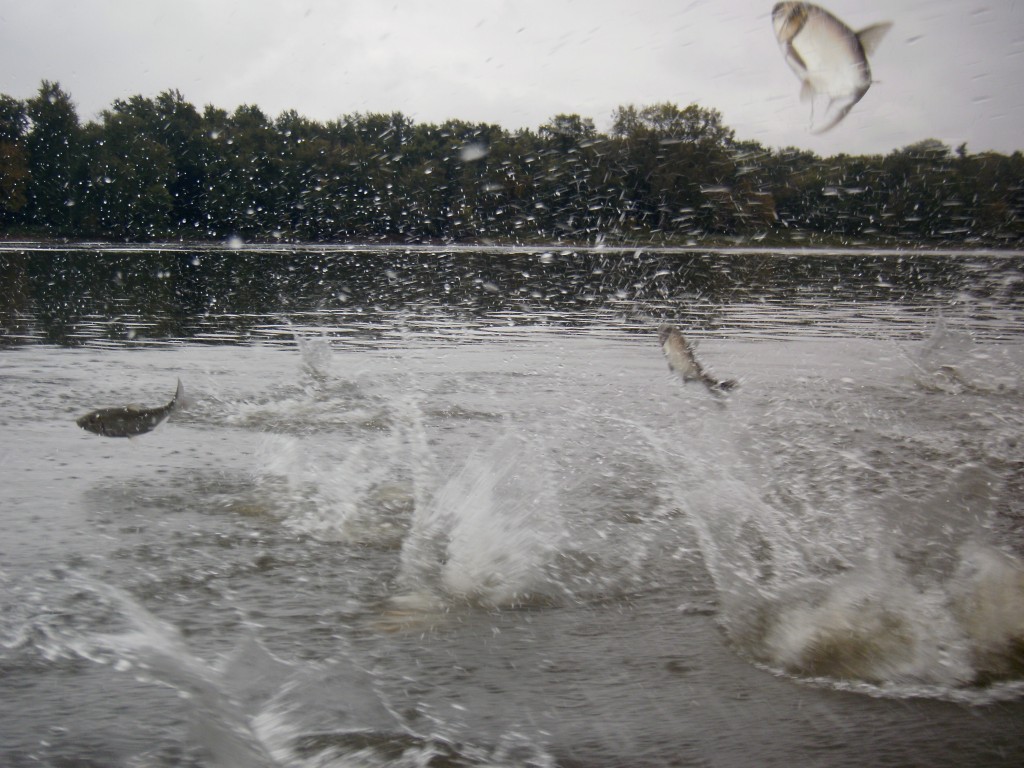
Therefore, scientists have been forced to devise other alternatives. It is widely speculated that the salmon fishery in Lake Michigan could collapse if Asian carp make their way in, but there is no evidence to support that. Furthermore, there have been studies conducted for predicting how successful Asian carp could be if they expand their range into the Great Lakes. Studies have shown that the general water chemistry of the Great Lakes is very different than the Illinois River and spawning success would be very limited. Egg hatching is greatly reduced in softer water like that of Lake Michigan. In addition, increases in current flow are important spawning cues for Asian Carp. There would obviously be no flood pulses like the Illinois River system in a large lake. The larger problem might be if they make their way into other prominent fisheries such as many of the streams that run into the Great Lakes. There are also other important fisheries upstream on the Mississippi River such as Eastern Wisconsin’s Lake Pepin, and the Saint Croix River.
While fisheries biologists work toward solutions to prevent range expansion and the control of existing populations, there are things that, you, the avid fishermen can do to help. Lobby your local lawmakers to fight for the Illinois Department of Resources to continue to get money so that they can keep their doors open and continue to manage the great fisheries that the state of Illinois houses. Keep yourself educated about other invasive species such as the spiny waterflea and zebra mussels, and educate other anglers about these nuisance species. In addition, report new sightings of invasive species to local conservation offices. Last but not least, follow regulations regarding the transport of bait and emptying livewells. With the help of anglers, it may be possible prevent further range expansions of several of our waters invasive species.
